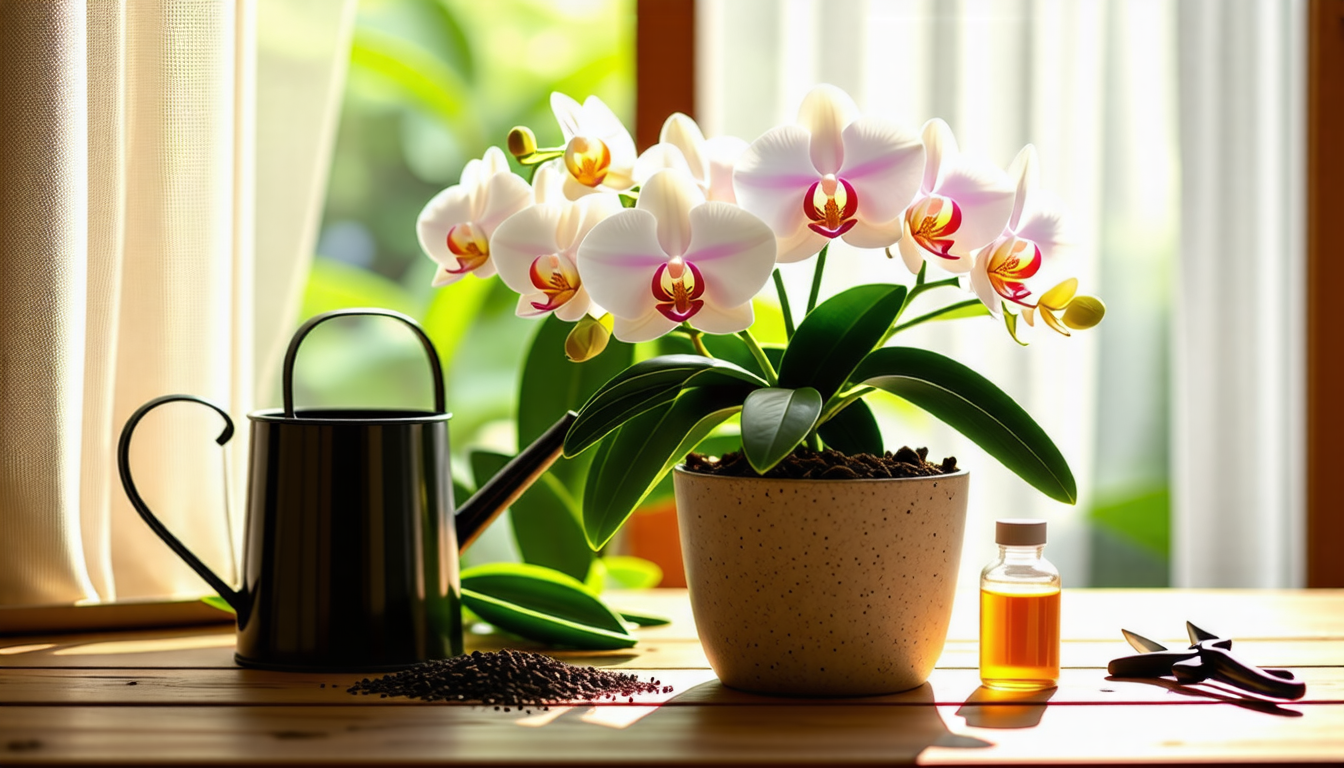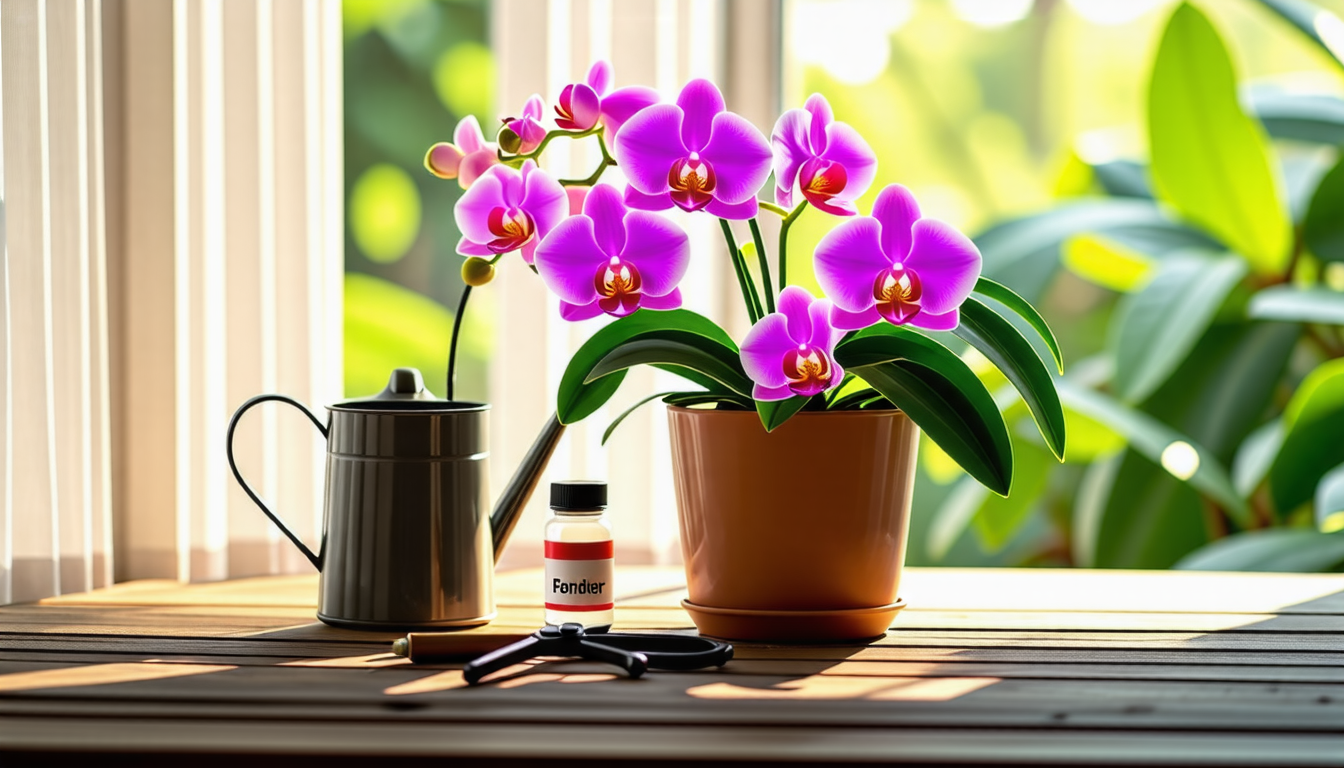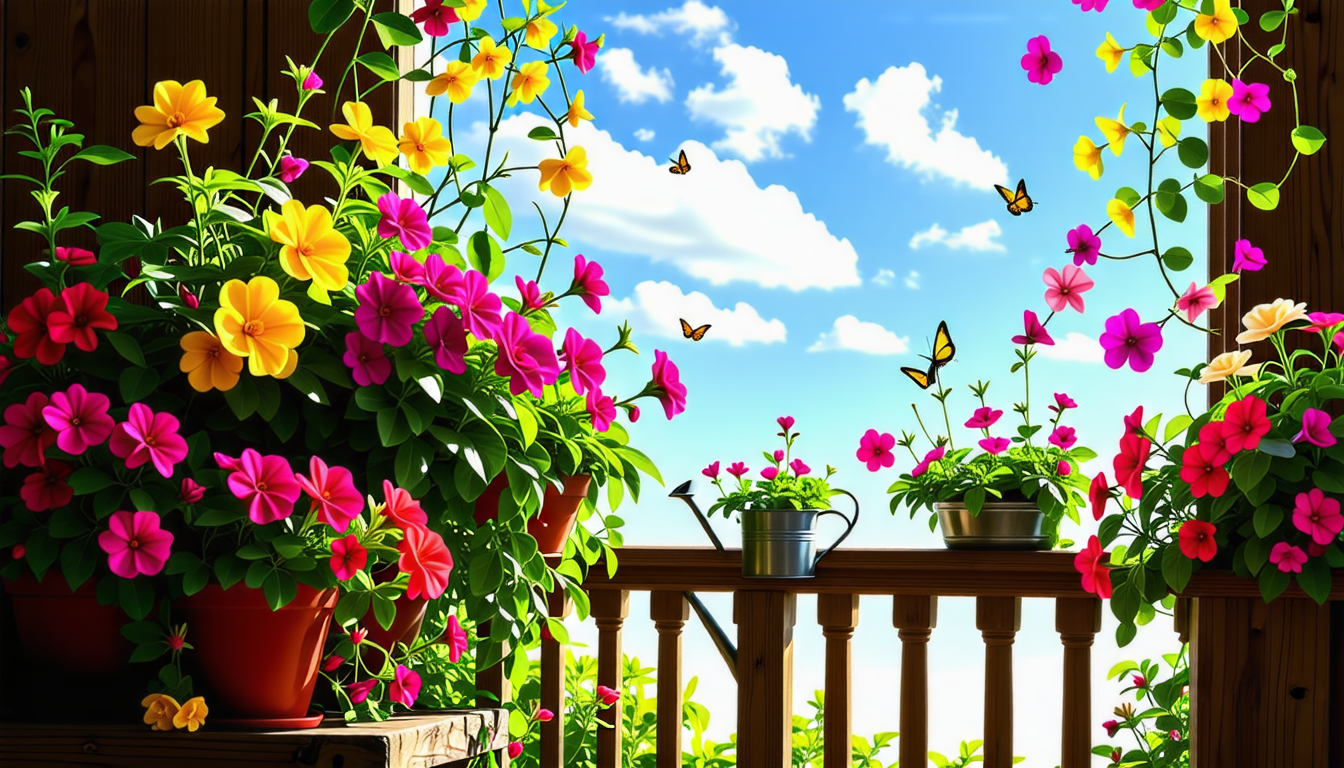|
IN BRIEF
|
Orchids, with their exquisite blooms and delicate charm, can transform any space into an oasis of beauty. However, many enthusiasts find themselves intimidated by the prospect of keeping these sophisticated plants thriving indoors. The truth is, caring for a potted orchid doesn’t have to be a daunting task! With the right knowledge and a sprinkle of love, you can cultivate happy and healthy orchids that bloom year after year. From understanding their unique watering needs to providing the ideal light conditions and humidity levels, this guide will unveil the secrets to successful orchid care. Unravel the mystery behind these enchanting plants and elevate your indoor gardening skills to new heights, ensuring a vibrant display of nature’s artistry in your home.

Understanding Your Orchid’s Needs
Orchids are not just beautiful houseplants but also unique in their care requirements. Understanding the specific needs of your orchid can lead to a thriving indoor garden. These plants are known for their stunning blooms and can last for many years with the right attention. Proper orchid care encompasses various aspects, including light, water, humidity, and fertilization. Let’s delve into how to properly care for a potted orchid and help it flourish.
Light Requirements
One of the essential factors for your orchid’s success is light. Orchids require at least six hours of bright, indirect light each day. Placing your pot in a south or east-facing window provides optimal conditions. Too much direct sunlight can scorch the leaves, while too little light can hinder blooming. Consider using sheer curtains to diffuse bright sunlight if direct rays are a concern.
Identifying Adequate Lighting Conditions
To determine if your orchid is receiving adequate light, observe its leaves. A healthy orchid typically has vibrant green leaves. If the leaves appear yellow, the lighting may be too intense. Conversely, dark green leaves could indicate insufficient light. Rotating your orchid pot occasionally can help ensure even light distribution.
Watering Habits
Watering your orchid properly is crucial for its health. On average, orchids should be watered every 7 to 10 days, depending on the season and humidity levels. During the growing season, more frequent watering may be necessary, while in cooler months, the frequency can be reduced.
How to Assess Watering Needs
Before watering, it’s a good practice to check the moisture level of the potting medium. Gently insert your finger into the soil mix; if it feels dry, it’s time to water. Use tepid water rather than cold, as sudden temperature changes can shock the plant. Ensure that excess water drains out of the bottom of the pot, as soggy roots are highly susceptible to rot.
Watering Techniques for Orchids
When you water, aim to keep the leaves and the roots moist without saturating them. If possible, consider soaking your orchid in a basin of tepid water for about 10-15 minutes. This method allows the roots to absorb moisture without overwatering. Check that your pot has drainage holes to prevent water accumulation.
Humidity Levels
Orchids thrive in moderate humidity levels, ideally around 50-70%. If the air in your home tends to be dry, particularly in winter, you may need to increase humidity levels. A simple way to achieve this is by placing a humidity tray filled with water and pebbles beneath your orchid pot. Alternatively, using a humidifier can also maintain the right moisture levels in the air.
Signs of Low Humidity
Be observant of your orchid’s leaves. If they begin to wrinkle or become crispy, this may indicate low humidity. Regular misting can also be applied, but avoid direct spraying onto the flowers to prevent fungal diseases.
Temperature Considerations
Temperature plays a vital role in orchid care. Most orchids prefer daytime temperatures of around 18-26°C and slightly cooler temperatures at night. Keeping your orchid away from drafts, heating vents, and refrigerators can help maintain a stable environment and promote blooming.
Seasonal Temperature Adjustments
During the summer, ensure your orchid is not exposed to extreme heat, while in winter months, protect it from cold drafts. Pay attention to the orchid’s flowering cycle; some varieties may require slight temperature changes to trigger blooms.
Choosing the Right Potting Medium
The potting medium you choose is fundamental to the health of your orchid. Unlike traditional houseplants, orchids thrive in a well-draining medium that allows air to circulate around the roots. Common potting mixes include bark chips, sphagnum moss, or a specialized orchid mix.
Repotting Your Orchid
Orchids should be repotted periodically, typically every 1-2 years. Look for signs that your orchid may need repotting, such as roots growing outside the pot or when the medium looks broken down. When repotting, gently remove the old medium and inspect the roots for any signs of rot or disease.
Fertilizing for Optimal Growth
A well-fed orchid is a happy one. Regular fertilization during the growing season promotes lush growth and vibrant blooms. Use a balanced, water-soluble fertilizer that is specifically formulated for orchids. Applying fertilizer every 2-4 weeks can be beneficial, but always dilute it to half the recommended strength.
Fertilizing Techniques
When fertilizing, it’s best to water your orchid beforehand. This prevents any potential fertilizer burn on the roots. Apply the diluted fertilizer directly to the soil, avoiding the leaves and flowers. After fertilizing, ensure that the orchid is rinsed with clean water to remove any residual fertilizer from the leaves and promote healthy growth.
Common Orchid Problems
Even the best care practices can lead to common issues. Recognizing these early can save your plant from severe damage. Leaf yellowing, root rot, and pest infestations can all affect your orchid’s health.
Dealing with Leaf Yellowing
Yellow leaves can indicate overwatering, under-watering, or inadequate light. Assess your care routine based on the signs your orchid presents. Adjusting your watering schedule and lighting conditions can often resolve the issue.
Preventing and Treating Root Rot
Root rot typically occurs due to overly wet conditions. Ensure that you are using a proper potting mix and that your pot has adequate drainage. If you suspect root rot, gently unpot your orchid, remove affected roots, and repot with fresh medium.
Pest Management
Pests like aphids, mealybugs, and spider mites can invade your orchid. Regularly inspect the leaves and stems for signs of infestation. Promptly remove any pests you see by hand or with a gentle stream of water. An insecticidal soap can further assist in isolating and treating any pest troubles.
Post-Bloom Care
Once your orchid has finished its blooming cycle, you may wonder how to care for it next. It’s important to maintain proper care even after blooming. Continue your regular watering and light routine, while gradually reducing fertilization.
Pruning After Flowers Fade
After the flowers have faded, you can prune the flower spike. If the spike has turned brown, cut it back to the base. If it remains green, you may choose to cut just above the node, encouraging further growth.
Long-Term Orchid Care
With perseverance and care, your potted orchids can live for many years. Continuously monitor them for any signs of distress and adjust your care routine accordingly. Engage with your orchid regularly; they are resilient plants that appreciate good care and attention.
Sharing Your Orchid Journey
Caring for orchids is a fulfilling experience. They thrive on your effort, commitment, and learning. As you adapt your care techniques over time, not only will your orchids flourish, but you’ll also enjoy the flourishing beauty they bring to your space.
Understanding the Basics of Orchid Care
To successfully care for a potted orchid, it is essential to grasp the fundamental needs of these stunning plants. Orchids thrive when provided with bright, indirect light, ideally from a south or east-facing window. This ensures they receive the necessary energy without being scorched by direct sunlight. Furthermore, maintaining the temperature above 18°C allows the orchid to flourish during both day and night. Remember that proper light exposure and temperature management are vital for their overall well-being.
In addition to light and temperature, watering frequency is a crucial aspect of orchid care. During the growing season, generally in warmer months, watering should occur every 7 to 10 days, depending on the moisture level of the potting mix. To determine whether it’s time to water, one can perform a simple test by pressing a finger into the mix. If it feels dry, it’s time for hydration. It is also important to note that tepid water is preferable; cold or iced water can be detrimental to the plant’s health.
Utilizing the Right Soil and Humidity
Selecting the appropriate growing medium is another key element in keeping orchids healthy. Utilizing a well-draining orchid-specific soil allows air to circulate around the roots, thereby preventing root rot. Additionally, orchids benefit from moderate humidity levels. If indoor air is too dry, consider placing a tray of water near the plant or misting the leaves occasionally to create a suitable environment.
As author Barbara Elkaim once said, “Every orchid is a masterpiece waiting to be unveiled.” With proper care, anyone can enjoy the beauty of these captivating plants in their home.

Caring for your potted orchid can be a rewarding experience, ensuring these beautiful plants flourish in your home. Start by placing your orchid in a spot that receives at least six hours of bright, indirect light daily, preferably from a south or east-facing window. Understand that watering needs vary; typically, you should water every 7 to 10 days, allowing the potting medium to dry out between sessions. Always use tepid water to keep the plant happy. Monitor the roots and leaves for signs of health, such as plump roots and vibrant foliage, while avoiding any yellowing leaves or pests. By creating the right environment, your orchid will thrive and bring beauty to your space for years to come.
Frequently Asked Questions about Potted Orchid Care
Q: How often should I water my potted orchid? A: Water your orchid approximately every 7 to 10 days, adjusting based on the moisture level of the potting mix.
Q: What type of light do orchids need? A: Orchids thrive in bright, indirect light for at least six hours a day, ideally placed near a south or east-facing window.
Q: Is it okay to use ice cubes to water my orchid? A: While some people do use ice cubes, it is recommended to water with tepid water to avoid shocking the plant.
Q: How can I tell if my orchid needs water? A: Press your finger into the potting medium; if it feels dry, it’s time to water.
Q: What should I do after my orchid has finished blooming? A: Cut back on watering and care, allowing the plant to rest, but ensure it still receives adequate light.
Q: How can I check the health of my orchid? A: Inspect the roots for plumpness and the leaves for any yellowing or signs of pests.
Q: What type of soil is best for orchids? A: Use a well-draining, orchid-specific potting mix to promote healthy growth.
Q: Can I keep my orchid outside? A: Orchids can be outside during warmer months, but ensure they are shielded from direct sunlight and strong winds.
Q: What temperature should I maintain for my potted orchid? A: Orchids generally prefer temperatures above 18°C for optimal growth.
Q: How long do potted orchids usually last? A: With proper care, potted orchids can thrive for many years, often blooming repeatedly.

